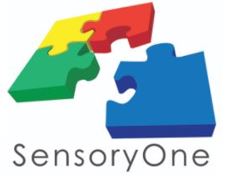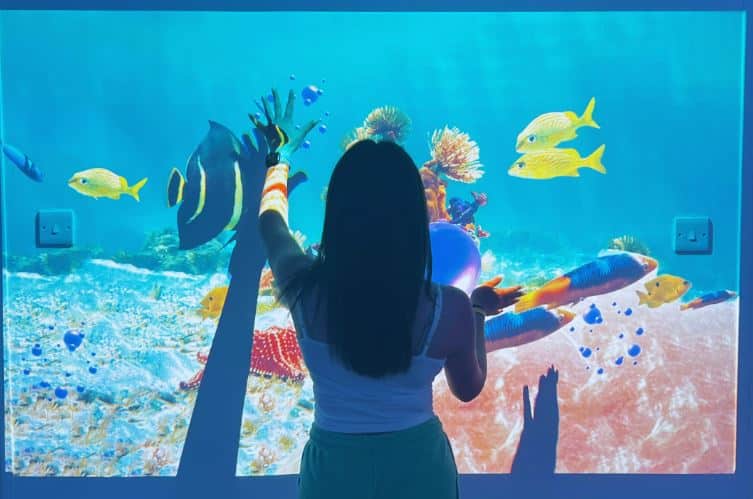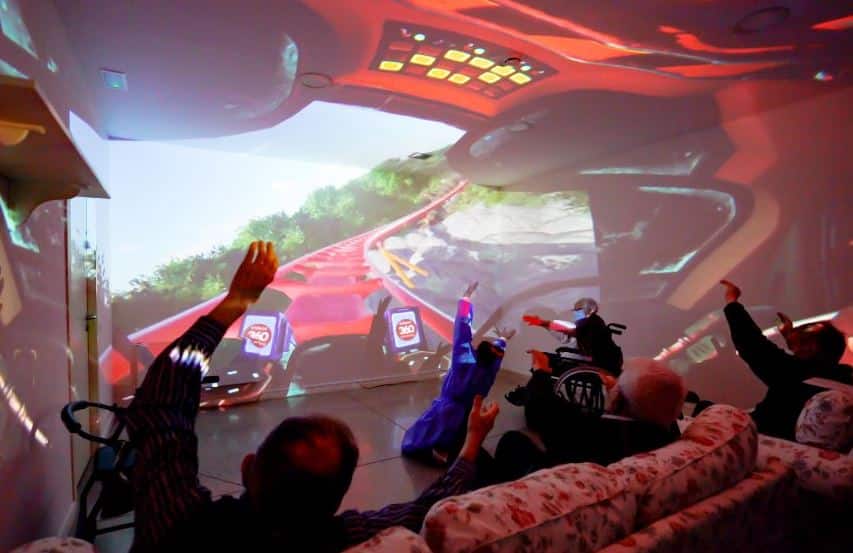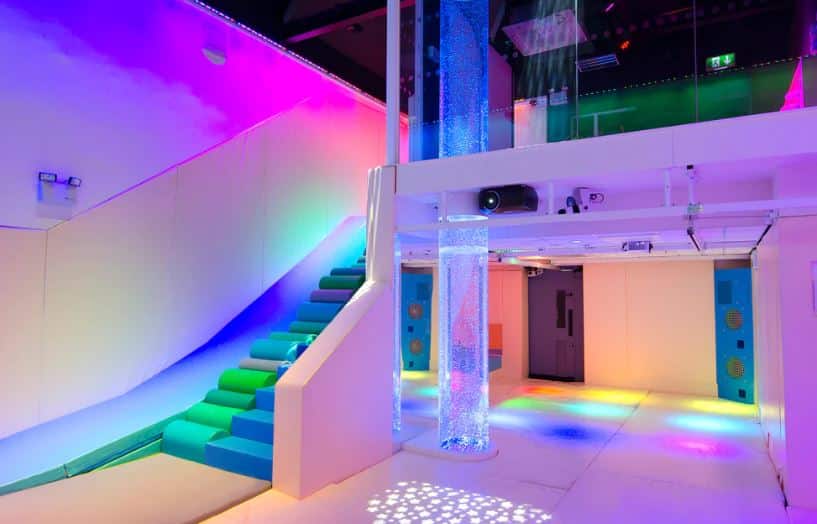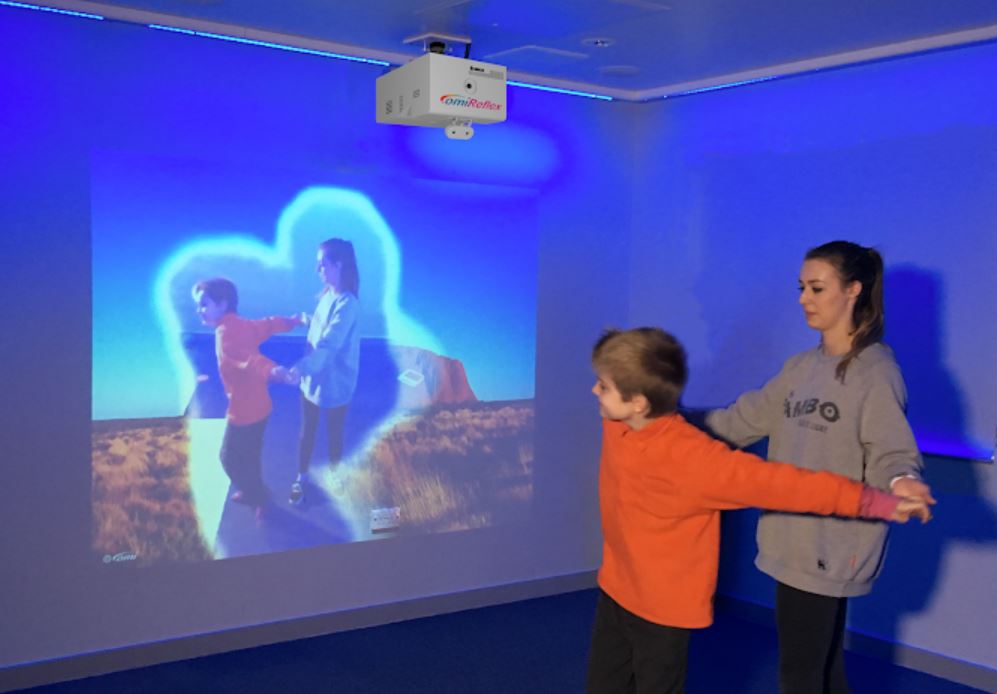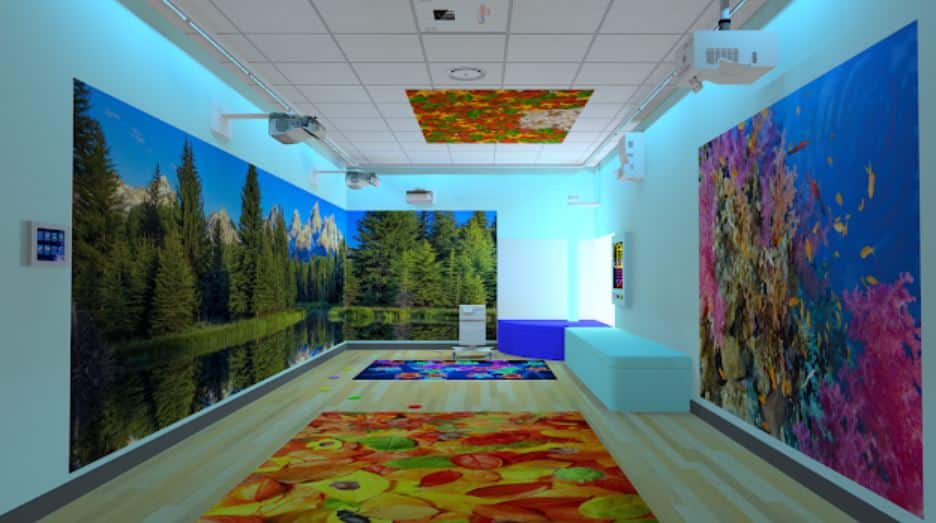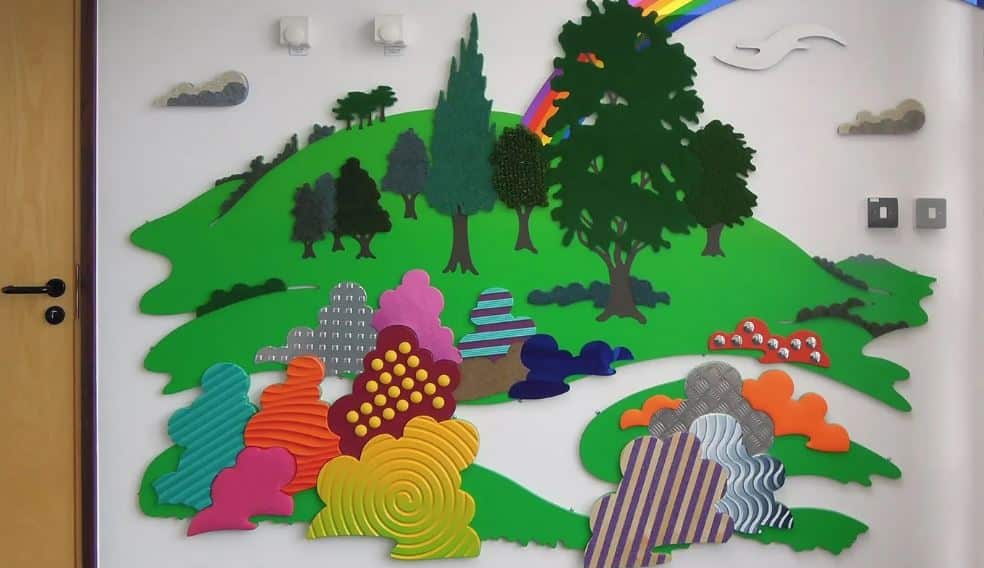Interactive video technology has emerged as a powerful tool in supporting patients and care residents with dementia. This innovative approach offers numerous benefits, enhancing the quality of life for those affected by this condition. Here’s how interactive video technology is making a difference in care centers throughout the USA and Canada. Sensory environments are increasingly the “must have” spaces for senior care centers.
At SensoryOne, we’re the exclusive North American distributors of cutting edge interactive technologies by OM Interactive. These projection systems support cognitive, therapeutic benefits and foster social connections. Project on walls, tables or even the ceiling. Providing eldercare patients and sufferers of dementia an improved quality of life in healthcare and seniors settings.
Cognitive Stimulation and Engagement
One of the primary advantages of interactive video technology is its ability to provide cognitive stimulation. Personalized videos, featuring familiar faces, places, and activities, help trigger memories and engage cognitive functions. By tailoring content to an individual’s history and preferences, these videos make engagement more meaningful and effective.
Therapeutic Benefits
Interactive videos also play a crucial role in therapy for dementia patients. Reminiscence therapy, which involves revisiting past events or places through video, can evoke positive memories and emotions, significantly boosting emotional well-being. Similarly, interactive music videos allow patients to listen and respond to familiar songs, improving their mood and reducing agitation.
Social Interaction and Communication
Maintaining social connections is vital for dementia patients, and interactive video technology facilitates this. Virtual visits through video calls enable patients to stay connected with family and friends, mitigating feelings of isolation and loneliness. Additionally, interactive video games promote social interaction among residents, fostering a sense of community within care facilities.
Cognitive and Physical Activities
Interactive videos are excellent for guiding cognitive and physical activities. Exercise programs tailored to individual capabilities help residents maintain physical health, while cognitive games like puzzles, memory challenges, and quizzes provide mental stimulation and improve cognitive functions.
Behavioral Management
Managing the behavioral aspects of dementia can be challenging, but interactive videos offer effective solutions. Videos with soothing scenes and sounds have a calming effect on residents, helping to manage agitation and anxiety. Moreover, these videos can aid in establishing daily routines, providing a sense of structure and predictability that is beneficial for dementia patients.
Training and Support for Caregivers
Interactive video technology is not just beneficial for patients; it also supports caregivers. Educational video resources on best practices in dementia care can enhance the quality of care provided. Additionally, caregivers can access real-time support through video conferencing with experts, helping them manage challenging behaviors more effectively.
Monitoring and Assessment
Telehealth consultations via interactive video enable regular check-ups and consultations with healthcare providers without the need for transportation. This convenience is particularly valuable for dementia patients who may have difficulty traveling. Furthermore, video technology allows caregivers to remotely monitor residents’ activities and well-being, ensuring their safety and health.
Emotional and Psychological Support
Interactive video technology also offers a range of emotional and psychological benefits. Art and culture programs, such as virtual museum tours, concerts, or art classes, provide cultural stimulation and enjoyment. Additionally, interactive storytelling sessions can be both entertaining and emotionally enriching for residents.
By leveraging interactive video technology, care facilities can significantly enhance the quality of life for dementia patients. This technology provides meaningful activities, maintains social connections, and supports cognitive and emotional well-being, making it an invaluable tool in dementia care. As we continue to innovate and integrate these technologies, the future of dementia care looks brighter and more promising than ever.

